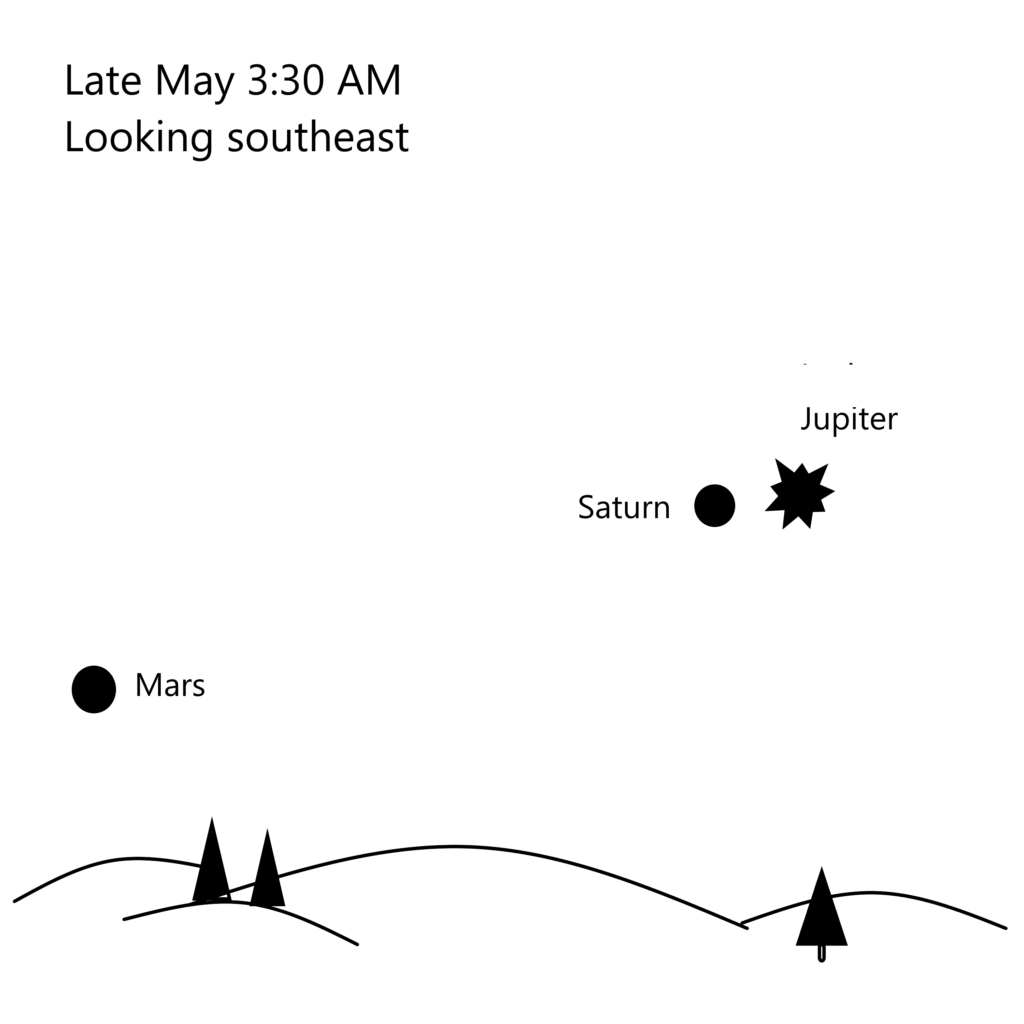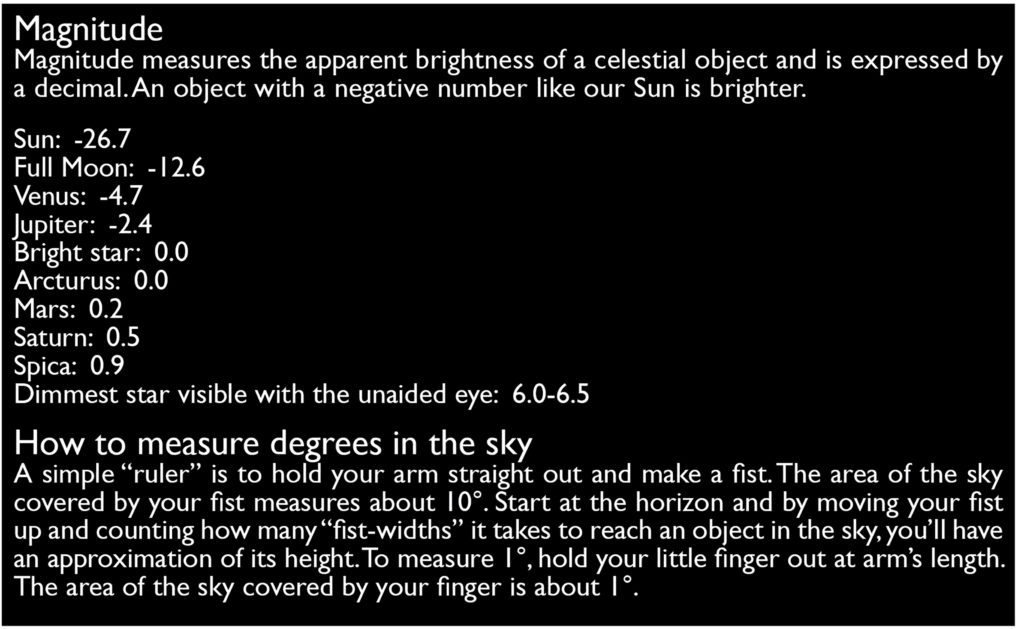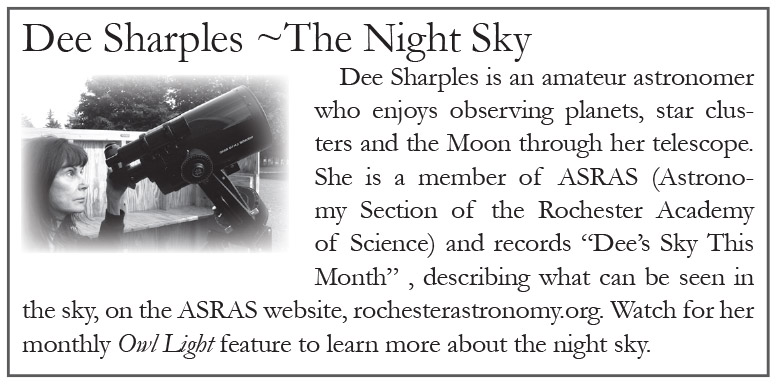The Night Sky-Five Planets Dominate the Night Skies
Stars in View too! Look Due South to locate Spica and Arcturus
- By Dee Sharples –

The planet Mars can be seen in the early morning sky rising before the Sun, but it’s not a very impressive sight. It shines at only magnitude 0.2, looking like a not-so-bright star in the southeast, but with a reddish hue. Jupiter, which is much brighter at magnitude -2.4, will lead you to the area where Mars and dim Saturn can be found.
But since we began sending spacecraft to explore this fourth planet from the Sun and landing rovers on its surface, this cold, dry, dusty, apparently lifeless planet, has proven to be very impressive!
Similar to Earth in many respects, Mars is only half our size, its day is 24.6 hours long, and its year is 687 Earth-days. It experiences seasons like Earth but with its elliptical, egg-shaped orbit around the Sun, some seasons are longer than others, unlike Earth’s which are almost equal.
Mars has a canyon system called Valles Marineris which is so long it would stretch from New York to California and is 10 times the size of the Grand Canyon. It also has the largest volcano in our solar system. Olympus Mons is almost three times taller than Mt. Everest and approximately the same size as the state of Arizona.
Scientific data and features on the surface returned by spacecraft sent to explore the planet appear to confirm that Mars experienced a huge flood 3.5 billion years ago. Mars still has water today in the form of water ice in and under the polar ice caps and briny water which flows down hills in certain seasons as seen in photographs.
The atmosphere on Mars is very thin, and because of this it’s unable to hold the Sun’s heat. Temperatures on Mars can reach a high of 70 under limited conditions or as low as -225 degrees Fahrenheit.
A few years ago winds on Mars created a dust storm so huge it covered almost the entire planet and took months to clear from the atmosphere.
Scientists continue to search for indications that life may have existed on Mars long ago, when it was a much warmer and wetter planet.
Look for the planet Venus shining at a brilliant magnitude -4.7 in the western sky after sunset. The planet Mercury will lie directly under Venus looking like a dim star on May 21.
Around 11:00 PM in mid-May look for the bright star Spica due south, 20 degrees above the horizon. The red supergiant star Arcturus which anchors the constellation Bootes will be higher and to Spica’s left. The stars of Bootes resemble a huge kite in the night sky.

_____________________
Strasenburgh Planetarium May 2020
Public observing on Saturday nights from the roof of Strasenburgh Planetarium, which would normally resume in April, will be canceled until further notice due to the COVID-19 outbreak.
For updates go to: www.rochesterastronomy.org/the-strasenburgh-scope/
